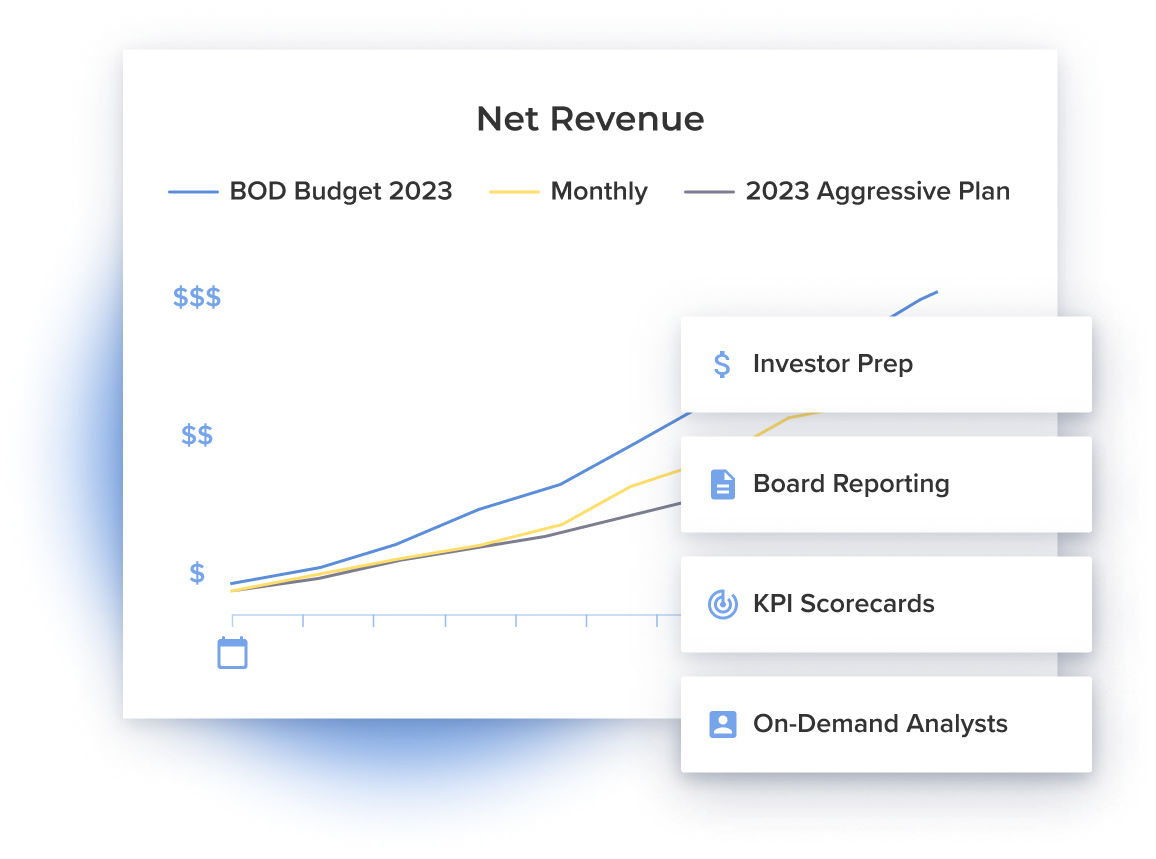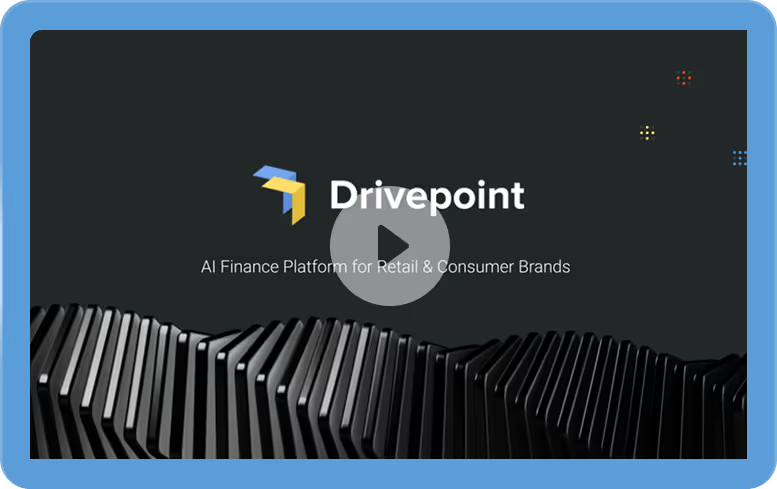How Graza Became an Omnichannel Success Story: Follow Their Lead With These 5 Tips

.png)
Living by a growth-at-all-costs mentality may have worked in 2020, but it’s no longer sustainable to partner with every retailer who’s interested. In 2024 this approach is more likely to delay your profitability timeline and jeopardize your brand’s optics.
We sat down with David Sooch, the Senior Director of Finance at Graza, to talk about how he helped turn Graza into the omnichannel distribution success it is today — and the role a more measured approach played in that success story.
The Graza approach
Today Graza olive oil lines an impressive array of supermarket shelves, appearing at massive chains like Walmart and Target as well as natural grocers like Whole Foods. But Graza didn’t get there by expanding to every retailer at once. David’s team carefully weighed each expansion opportunity for its potential to drive immediate sales and brand awareness. If their financial predictions did not indicate that a partnership would be an immediate triumph, they held off.
For David, knowing how to pace your expansion — and when to wait — is key to making a splash in wholesale. To build the most profitable wholesale partnerships, you should invest in a system that enables you to model multiple financial outcomes and make informed, data-driven decisions.
For Graza’s profitable expansion to wholesale, David relied on 5 key strategies.
1. Treat your finance and ops teams as interconnected
"In the consumer products industry, everything you do on the finance side directly impacts your ops team and vice versa. Putting finance and ops under one roof at Graza has been key to scaling quickly."
Your brand’s finances don’t exist in a void; having a steady pulse on them is part and parcel of growing your business. As liaison between Graza’s finance and operations teams, David embraces the interconnection between these two branches of the business. Whether he’s demand planning, forecasting, or managing Graza’s inventory, he relies on a flexible FP&A model to juggle these cross-functional interests.
On the operational side, for example, David uses the finance team's forecasts to manage Graza’s inventory. Because deciding how much inventory to order and how to price it has huge cash implications, it requires constant checks to align with the bigger picture.
Seeing the projections helps him determine how much inventory to have on hand and how these adjustments will affect Graza’s bottom line. “Without the full financial context for each operational decision, Graza wouldn’t have been able to scale so profitably,” David says.
2. Rack up some easy wins before expanding to more retailers
"Pivoting to wholesale subjects your brand to a lot of external scrutiny. Don’t enter into a partnership with a new retailer unless you know that account is going to be a star performer from day one."
Although your ultimate goal might be to stock as many shelves as possible, David suggests starting by cherry-picking your best opportunities. For Graza, the move to wholesale was all about taking slow, measured steps and iterating from there.
David suggests partnering with a retailer whose ICP closely aligns with your average customer. Since Graza already had a firm footing in the natural market, David’s team anticipated that Whole Foods would be a high-performing test case as they navigated future expansions.
By the same token, David recommends holding off on some partnerships until you know they’ll bear immediate fruits. Graza waited to expand to traditional grocery retailers like Kroger and Albertsons until after their seamless rollout at Whole Foods, knowing their numbers would be better when they had built up more brand awareness.
David and the Graza team also opted to sell their product at a smaller selection of stores once they did expand to a mass market. And, their strategy paid off: Those launches were immediately profitable too, and now Graza olive oil is ubiquitous at mass retailers and natural grocers alike.
3. Dial into your unit economics and inventory levels
“Gross margin should be there from the get-go. If you aren’t factoring in all your expenses and setting your prices accordingly, it’s very hard to balance growth with profitability.”
If you want to optimize your financials for scaling in the CPG space, David advises taking a deep dive into your unit economics and inventory levels.
Before signing onto a new opportunity, you should first ask yourself if you have the inventory and manufacturing capabilities to service wholesale launches. The added operational costs don’t always justify the expansion.
And, once you’ve settled the inventory question, you’ll want to carefully calculate what prices you can reasonably set to maximize contribution margins without sacrificing conversions. Getting your pricing architecture right from the start is critical because, once pricing is established, you run the risk of losing customers if you raise your prices later.
“If you start by pricing your product much higher than your competition,” David cautions, “New customers that aren’t aware of your brand might not buy it.” But he admits that it’s a delicate dance. “On the other hand,” he says, “Pricing your product as low as the incumbents — who are often large CPG companies with ample financial backing — could leave you with razor-thin margins.”
David uses a precision-engineered system of shareable spreadsheets and collaborates with the sales team to set Graza’s margin profile. This strategy ensures that profitability is always the top priority.
4. Only accept high-ROI opportunities
"Only work with brands that are 100% invested in building your brand awareness. We knew Whole Foods would be the perfect fit for us because they gave our product prime shelf placement and a special feature in the produce section."
While it might be tempting to accept every opportunity that comes your way, you should steer clear of partnerships with payoffs that aren’t immediately apparent. Launching at a retailer can come with high up-front expenses, or slotting fees, that might not be worth it if you don’t sell enough products to offset the expense.
David recommends partnering with retailers who want to promote your product by putting it front and center. Not everyone is going to walk down the oil aisle. But, he says, “If the retailer is willing to place your product in an end cap or give it a special feature in the produce section — as Whole Foods did for us at Graza — then you have a great opportunity to increase brand visibility.”
Still, when considering any promotional programming, you’ll want to weigh the costs of the prime shelf placement against the benefits so much visibility could bring. If, for example, a retailer gives you central placement but also asks you to heavily discount your product, the margins still might not justify the opportunity.
For such moments, David emphasizes the value of having a robust internal sales team that already has visibility into your financials. When David’s team was deciding which wholesale opportunities to pursue, they worked closely with the sales team to determine estimated sales in the first year after launch. If the projected profits didn’t offset the slotting fees, they chose to pass on the opportunity and pursue a higher-ROI option.
5. Remain agile in the face of volatility — with Drivepoint
“If you’re a high-growth brand, you have to be flexible and nimble at every stage.”
David says Drivepoint was very helpful in explaining the full financial implications of Graza’s retail rollout. The strategic finance platform for FP&A specifically helped the team understand the expansion’s impact on their P&L and cash flow, giving them the confidence they needed to confront every uncertainty.
Whether David’s team is modeling complex scenarios or simply looking for reassurance they could survive the worst-case scenario, Drivepoint always has a data-driven answer at the ready.
Drivepoint allows Graza and dozens of other brands to:
- Access data from all sales channels in a single, user-friendly interface
- Compare actual performance vs forecasts
- Unlock surprising financial insights and growth opportunities
- Create shareable reports for internal and external distribution
Want to see what Drivepoint can do for your team’s FP&A strategy and cross-functional communications? Schedule a demo today.
Subscribe to our newsletter

Ready to see what you can do with Drivepoint?
Learn how other consumer and CPG brands are driving margin and cashflow with Drivepoint








